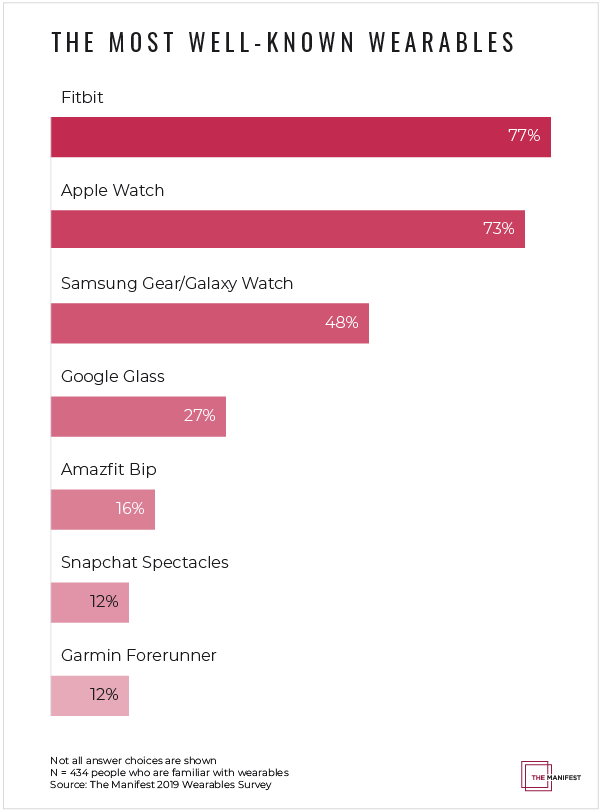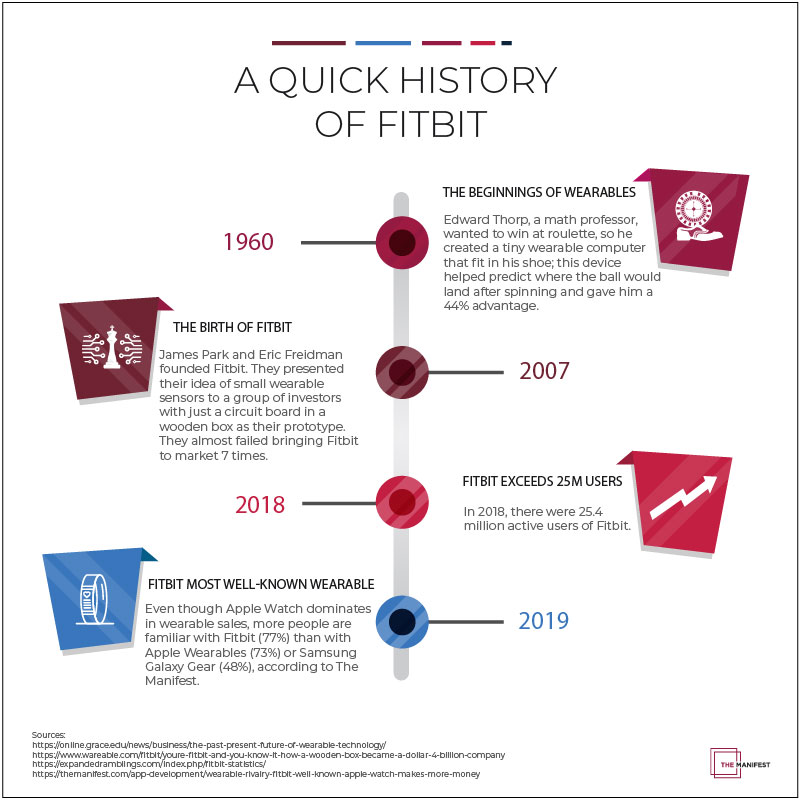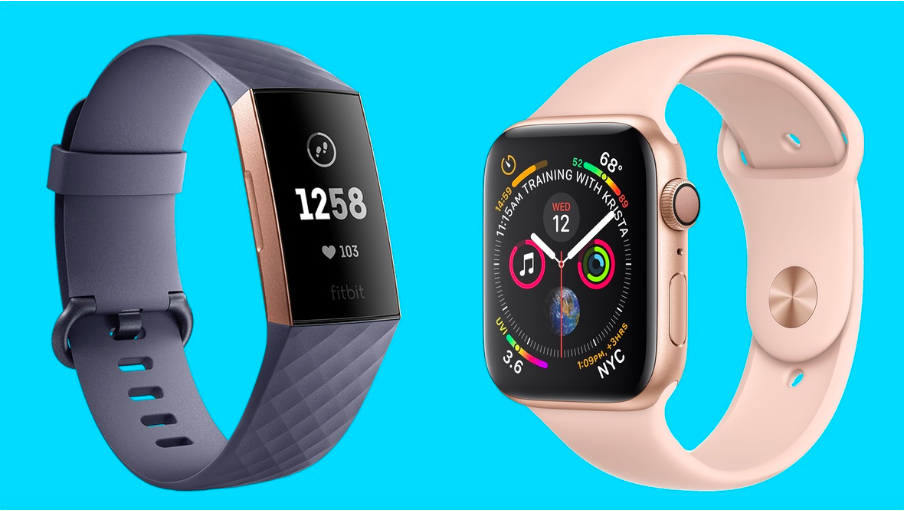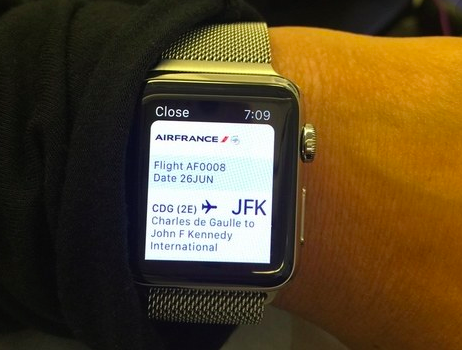The Wearable Rivalry: Fitbit Is More Well-Known, Even as Apple Watch Makes More Money

The Wearable Rivalry: Fitbit Is More Well-Known, Even as Apple Watch Makes More Money
Apple Watch generates the most revenue among wearable brands, but people are more familiar with the Fitbit brand, which offers a simple and cost-effective alternative to the Apple Watch. According to our survey, the largest percentage of people (77%) are familiar with Fitbit, and 73% are familiar with the Apple Watch. This article will explore why Fitbit is more well-known, but Apple still wins in revenue.
In 1960, mathematics professor Edward Thorp wanted to win at roulette. But first, he needed a way to sneak in his timing device that predicted where the ball would land after it spun around the table.
His solution: Thorp created a tiny wearable computer that he fit into his shoe. This wearable computer gave him a 44% advantage in roulette.

Wearables have become more complex since Thorp first dominated roulette, but the same premise exists. As people recognize the usefulness of having a computer on their bodies, the demand for these types of devices grows.
The Manifest surveyed 581 people across the U.S. about their knowledge of wearable brands. We found the most well-known wearable brands are Fitbit and Apple Watch.
Apple Watch dominates in wearable sales: Apple wearables’ 2019 first-quarter revenue of $5.1 billion was 19 times larger than Fitbit’s overall sales of $272 million.
It’s surprising, then, that more people are familiar with Fitbit.
Both brands offer different values to their users. While Fitbit trackers succeed at simplicity, Apple Watch offers more features.
Our Findings
- More than three-quarters of people (77%) are familiar with Fitbit, which offers simple and affordable fitness-tracking technology.
- Meanwhile, 73% of people are familiar with the Apple Watch, which continues to dominate in revenue.
More People Know Fitbit Than Apple Watch Due to Fitbit's Price and Simplicity
Fitbit began the fitness wearable trend in 2007 and continues to remain popular. More than three-quarters (77%) of people are familiar with the brand.

Meanwhile, only 48% of people are familiar with the Samsung Galaxy Gear.
People use Fitbit to track their exercise and monitor sleep. Many users find it helpful to keep track of their heart rate and daily steps.
Why are people more familiar with Fitbit than Apple Watch?
- Fitbit came first.
- Fitbit is more affordable.
1. Fitbit’s Exponential Rise in the Wearable Industry
Fitbit was one of the first mass-produced wearables for the wrist that gave people an accurate read on their fitness and health.
In 2007, James Park and Eric Freidman founded Fitbit. They presented their idea of small wearable sensors to a group of investors with just a circuit board in a wooden box as their prototype.
Investors recognized the potential, but Park and Friedman struggled at first to bring the product to market. They spent months looking at suppliers in Asia, encountered design flaws, and almost failed as a business 7 times.
“Several times, [Fitbit was] pretty close to being dead," Park said.
But the business survived. At first, Fitbit enjoyed a period of industry dominance. Then, in the following years, giants such as Apple and Samsung built their first smartwatches, competing against Fitbit.

Fitbit popularized fitness wearable technology worn on the wrist, though, and people still associate wearables with the brand. In 2018, there were 25.4 million active users of Fitbit.
2. Fitbit Is Twice as Cheap as Apple Watch
A Fitbit tracker remains a more affordable alternative to an Apple Watch for monitoring fitness.
Most of the population (77%) may know of Fitbit because they can afford it: While the least expensive Apple Watch Series 5 is $399, the most expensive Fitbit fitness tracker is $149.99.

Fitbit’s cost-effective price makes the tracker an appealing alternative. While a simple Fitbit tracker may not come with as many features as an Apple Watch, Fitbit makes fitness tracking simple and accessible to most people.
So, How Does Apple Watch Make So Much Money?
In 2018, the revenue from Apple’s wearables alone surpassed Netflix’s overall run rate, with $16 billion in revenue compared to Netflix’s $15 billion.
Apple Wearables generates the revenue of a Fortune 200 company because Apple uses narrative-driven marketing and Apple Watch can do basically anything a smartphone can.
Apple Watch Sells People on Wearables With Compelling, Narrative-Driven Marketing
Apple excels at advertising. It drives people to products with simple yet powerful narratives that tell consumers who they could be with the product rather than what it can do.
Consider the following story, which follows Apple's successful pattern of making its ads relatable, relevant, and nostalgic:
Tom has a lot going on. Tom has a boss who likes to talk politics, a mother who calls every hour to check-in, and a dream he hasn’t quite had time to fulfill.
What Tom doesn’t have is time, which is why he bought an Apple Watch.
With an Apple Watch, Tom can listen to the news and tell his boss exactly why “it’s complicated.”
With an Apple Watch, Tom can set an alarm and call his mom before she starts asking where he is.
With an Apple Watch, Tom can transition from road to water without missing a step.
In fact, Tom can do all this while winning that triathlon he’s been wanting to run since he saw Simon Whitfield on TV in 2000.
When every day feels like a sprint, we remind you when it’s OK to take a breath. Why wouldn’t you be a better you?
Narrative-driven marketing connects people with products through storytelling.
An Apple Watch may seem like just another piece of technology. When associated with self-improvement through inspirational advertisements, however, people believe they can improve their lives by purchasing an Apple product.
Apple Watch Makes Your Wrist an iPhone
Apple Watch offers more features than Fitbit.
Fitbit recently released a smartwatch called the Fitbit Versa, as a competitor to Apple, but the brand originally was focused on tracking health.
Meanwhile, Apple Watch prioritizes allowing users to access many of their iPhone features from their wrist.
For example, Apple Watch lets you:
- Make calls
- Check messages
- Track exercise
- Control Apple TV
- Set reminders
- Listen to music
- Pay with Apple Pay
- Get directions
- Set alarms/timers
Apple Watch is also water-resistant, which makes it ideal for exercising and swimming. The watch provides access to apps such as Apple Maps that help people navigate while they run or walk and even allows people to show airline tickets from their watch while boarding a plane.

You can simply hold up your Apple Watch with your ticket and the airline will scan your screen.
While Fitbit now offers a smartwatch, Apple Watch’s added features make it more appealing to people and provide motivation to invest in the more expensive smartwatch.
Fitbits May Be More Popular, but Apple Watch Wins for Business Value
Fitbit and Apple Watch are the most well-known wearables in the U.S., demonstrating how these two brands continue to spark customer interest and drive sales.
More than three-quarters of people (77%) are familiar with Fitbit, while 73% know Apple Watch.
Although more people know Fitbit, Apple dominates in revenue due to its higher price and inspirational marketing. Fitbit and Apple Watch offer health benefits for people investing in smart technology.
About the Survey
The Manifest surveyed 581 people who are familiar with wearables and other types of IoT technology.
Sixty-four percent (64%) of respondents are female, and 36% are male. Nearly half (47%) are ages 18-34; 35% are ages 35-54; and 18% are over the age of 55.
